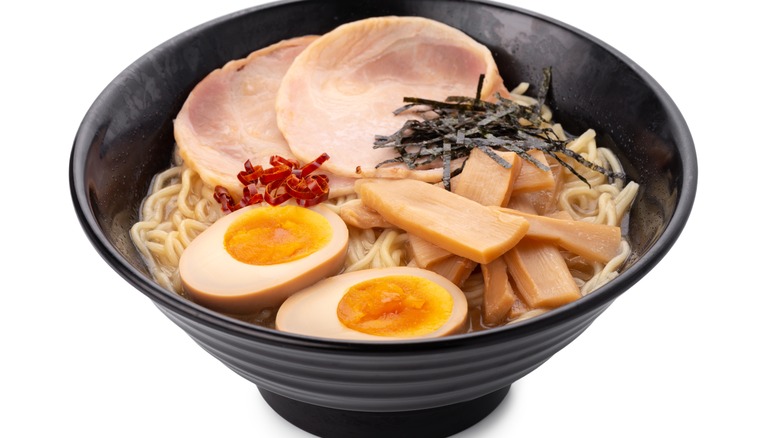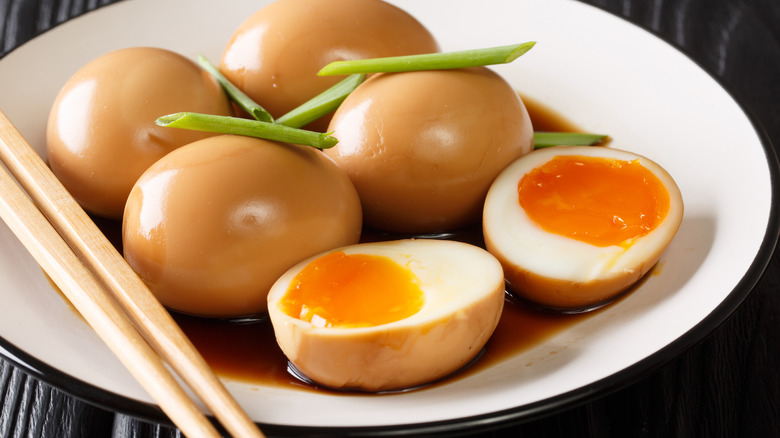How Are Ramen Eggs Different From Hard-Boiled Eggs?
At its simplest, ramen has two components — broth and noodles — and some would say that the key to a good bowl of ramen lies somewhere in the delicately seasoned broth and the chewy tooth of hand-pulled noodles. As important as the broth and the noodles may be, there is a third component that can make or break a bowl of ramen: the toppings. After all, a clever selection of toppings can quickly upgrade a cheap packet of instant ramen into a hearty restaurant-style meal!
Roasted or braised pork slices called chashu and steamed fish cakes known as kamaboko are often added to meaty bowls of ramen whereas bamboo shoots, bean sprouts, corn, strips of seaweed, and chopped leeks, or green onions are typical of most ramen bowls regardless of the type of ramen that it is. Oftentimes, the toppings also include an ajitsuke tamago or, a ramen egg.
Ramen eggs are also known as ajitama — a combination of the Japanese words aji and tama, meaning taste and ball. Quite simply then, an ajitama is a taste ball. So while it may seem like a ramen egg is nothing but a hard-boiled egg, that's not the case at all and unlike a hard-boiled egg, an ajitama hides a whole lot of flavor.
Ramen eggs are marinated in a sauce
While hard-boiled eggs are cooked till both the egg whites and egg yolks solidify and the latter turn a pale yellow, ramen eggs are soft-boiled with yolks that have a jammy consistency. The biggest difference, however, is that ramen eggs are marinated in a sauce after they are boiled, cooled, and peeled.
The most common liquid used to marinade the ramen eggs is soy sauce but oftentimes, the soy sauce can be mixed with sake, mirin, and vinegar to make a more flavourful sweet and salty liquid. Soft-boiled eggs are then soaked in the sauce for anywhere between one to two days. While this helps give the egg color and adds more flavor to the egg and consequently the bowl of ramen, soaking eggs in a marinade also firms up the texture of the egg whites while curing the yolks inside and giving them a more custard-like consistency.
Sometimes, instead of soaking an entirely peeled egg in a marinade, the shells of soft-boiled eggs are merely cracked. Not only does this give the eggs a marble-like pattern when the cracked shells are finally peeled off, but it also helps control the amount of seasoned liquid that the eggs soak up. The ramen eggs are then sliced into two halves and served over a bowl of ramen or as a side dish with chili oil, sesame seeds, scallions, and some more soy sauce.

